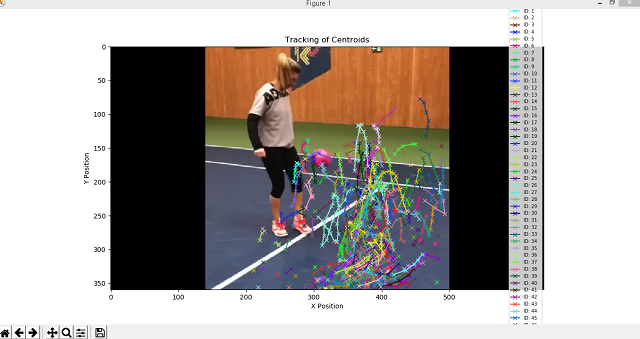Today, I will show you how to have a more complex custom application with PyQt5 and QML file.
You need to create into your python folder a new folder named
QMLCustom.
Into this file create two python files named:
__init__.py and QMLCustom.py.
The
__init__ will be an empty file.
Into your python folder installation (where you create the QMLCustom folder), create a new QML_custom.qml file.
The QML_custom.qml file will have this:
import QtQuick 2.0
import SDK 1.0
import QtQuick.Layouts 1.1
Rectangle {
id: appwnd
visible: true
width: 640
height: 480
property int columns : 2
property int rows : 2
Rectangle {
anchors.fill: parent
color: "#00f"
}
GridView {
id: grid
anchors.fill: parent
cellWidth: Math.max(width/2, height/2);
cellHeight: Math.max(width/2, height/2)
model: dashModel
delegate : Rectangle {
Layout.alignment: Layout.Center
width: grid.cellWidth
height: grid.cellHeight
color: "#0ff"
border.color: "#fff"
border.width: 10
Text {
id: name
anchors.horizontalCenter: parent.horizontalCenter
anchors.bottom: parent.bottom
anchors.leftMargin:15
anchors.topMargin: 15
width: parent.width
height: parent.height
textFont {
family: "Halvetica"
italic: false
pointSize:20
}
suffixText: suffix
}
}
onWidthChanged: {
grid.cellWidth = grid.width/appwnd.columns;
}
onHeightChanged: {
grid.cellHeight = grid.height/appwnd.rows
}
}
ListModel {
id: dashModel
ListElement {
tagName: "Text"
suffix: "First text"
}
ListElement {
tagName: "Text"
suffix: "Next text"
}
}
}
If you read this you will see the qml type file has two imports and a text.
The imports are used to load it and the text file is used to describe what we need.
In this case is created a Rectangle, GridView and one ListModel with two ListElement.
All of this part will be a link to the QMLCustom.py file.
For example: follow the
suffixText from qml file
suffixText: suffix into
QMLCustom.py file (decorator
def suffixText(self, text)).
Into the QMLCustom folder you need to fill the QMLCustom.py with this:
import PyQt5
from PyQt5.QtCore import *
from PyQt5.QtGui import *
from PyQt5.QtWidgets import *
from PyQt5.QtCore import pyqtProperty, pyqtSignal, pyqtSlot
from PyQt5.QtQuick import QQuickPaintedItem, QQuickItem
from PyQt5.QtGui import QPainter
from PyQt5 import QtCore
class QMLCustom(QQuickPaintedItem):
#
class DialType():
FullDial = 0
MinToMax = 1
NoDial = 2
#
sizeChanged = pyqtSignal()
valueChanged = pyqtSignal()
#
backgroundColorChanged = pyqtSignal()
#
textColorChanged = pyqtSignal()
suffixTextChanged = pyqtSignal()
showTextChanged = pyqtSignal()
textFontChanged = pyqtSignal()
def __init__(self, parent=None):
super(QMLCustom, self).__init__(parent)
self.setWidth(100)
self.setHeight(100)
self.setSmooth(True)
self.setAntialiasing(True)
self._Size = 100
self._DialWidth = 15
self._SuffixText = ""
self._BackgroundColor = Qt.transparent
self._TextColor = QColor(0, 0, 0)
self._ShowText = True
self._TextFont = QFont()
def paint(self, painter):
painter.save()
size = min(self.width(), self.height())
self.setWidth(size)
self.setHeight(size)
rect = QRectF(0, 0, self.width(), self.height())
painter.setRenderHint(QPainter.Antialiasing)
painter.restore()
painter.save()
painter.setFont(self._TextFont)
offset = self._DialWidth / 2
if self._ShowText:
painter.drawText(rect.adjusted(offset, offset, -offset, -offset), Qt.AlignCenter, self._SuffixText)
else:
painter.drawText(rect.adjusted(offset, offset, -offset, -offset), Qt.AlignCenter, self._SuffixText)
painter.restore()
@QtCore.pyqtProperty(str, notify=sizeChanged)
def size(self):
return self._Size
@size.setter
def size(self, size):
if self._Size == size:
return
self._Size = size
self.sizeChanged.emit()
@QtCore.pyqtProperty(float, notify=valueChanged)
def value(self):
return self._Value
@value.setter
def value(self, value):
if self._Value == value:
return
self._Value = value
self.valueChanged.emit()
@QtCore.pyqtProperty(QColor, notify=backgroundColorChanged)
def backgroundColor(self):
return self._BackgroundColor
@backgroundColor.setter
def backgroundColor(self, color):
if self._BackgroundColor == color:
return
self._BackgroundColor = color
self.backgroundColorChanged.emit()
@QtCore.pyqtProperty(QColor, notify=textColorChanged)
def textColor(self):
return self._TextColor
@textColor.setter
def textColor(self, color):
if self._TextColor == color:
return
self._TextColor = color
self.textColorChanged.emit()
@QtCore.pyqtProperty(str, notify=suffixTextChanged)
def suffixText(self):
return self._SuffixText
@suffixText.setter
def suffixText(self, text):
if self._SuffixText == text:
return
self._SuffixText = text
self.suffixTextChanged.emit()
@QtCore.pyqtProperty(str, notify=showTextChanged)
def showText(self):
return self._ShowText
@showText.setter
def showText(self, show):
if self._ShowText == show:
return
self._ShowText = show
@QtCore.pyqtProperty(QFont, notify=textFontChanged)
def textFont(self):
return self._TextFont
@textFont.setter
def textFont(self, font):
if self._TextFont == font:
return
self._TextFont = font
self.textFontChanged.emit()
This is a base python module that allows you to use the qml file and show it into your application.
The QMLCustom.py use a class (with pyqtSignal and paint to link all data with decorators) to be used into your application.
This can be a little difficult to follow but if you deal with a tool like QtCreator editor you will understand how this integrated GUI layout and forms designer with this script.
The last part is more simple and is the application.
This script uses both the custom python module QMLCustom and the qml file.
Create a python file into your folder python installation fill with the next script and run it:
import sys
import os
import subprocess
from QMLCustom.QMLCustom import QMLCustom
from PyQt5.QtCore import QUrl, Qt, QObject, pyqtSignal, pyqtSlot
from PyQt5.QtGui import QGuiApplication, QCursor
from PyQt5.QtQuick import QQuickView
from PyQt5.QtQml import qmlRegisterType
from OpenGL import GLU
class App(QGuiApplication):
def __init__(self, argv):
super(App, self).__init__(argv)
if __name__ == '__main__':
try:
app = App(sys.argv)
qmlRegisterType(QMLCustom, "SDK", 1,0, "Text")
view = QQuickView()
ctxt = view.rootContext()
view.setSource(QUrl("QML_custom.qml"))
view.show()
ret = app.exec_()
except Exception as e:
print (e)
The result is this:








